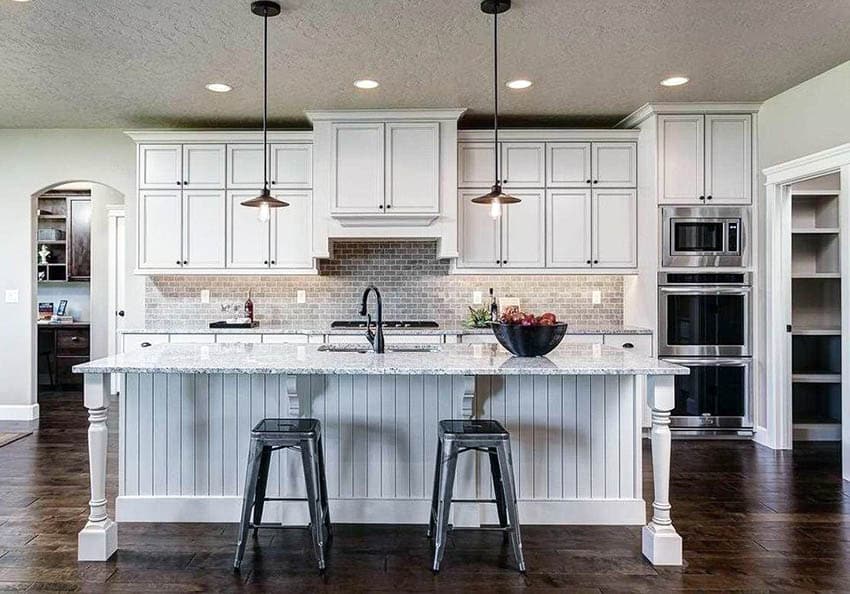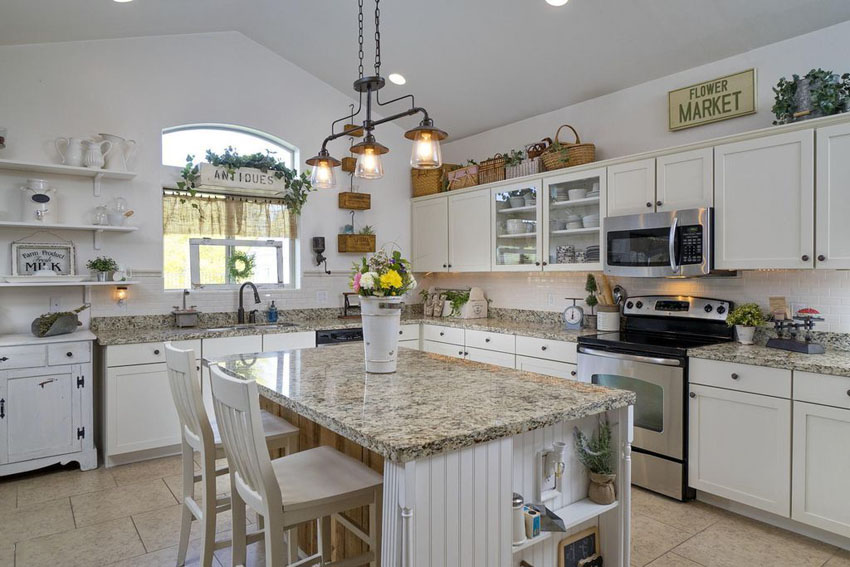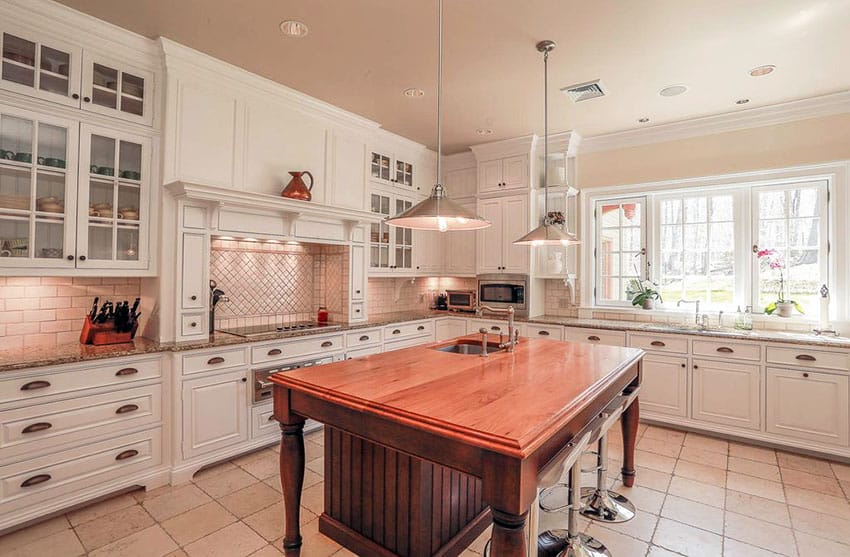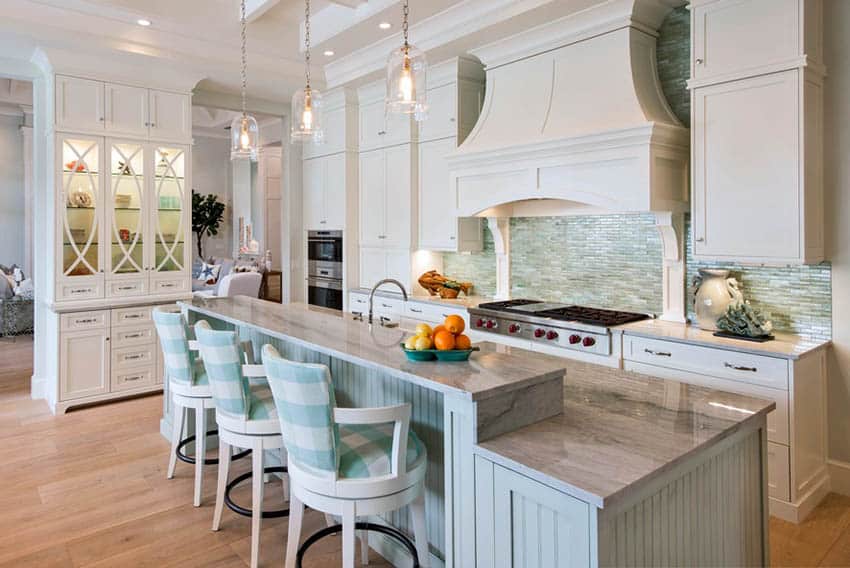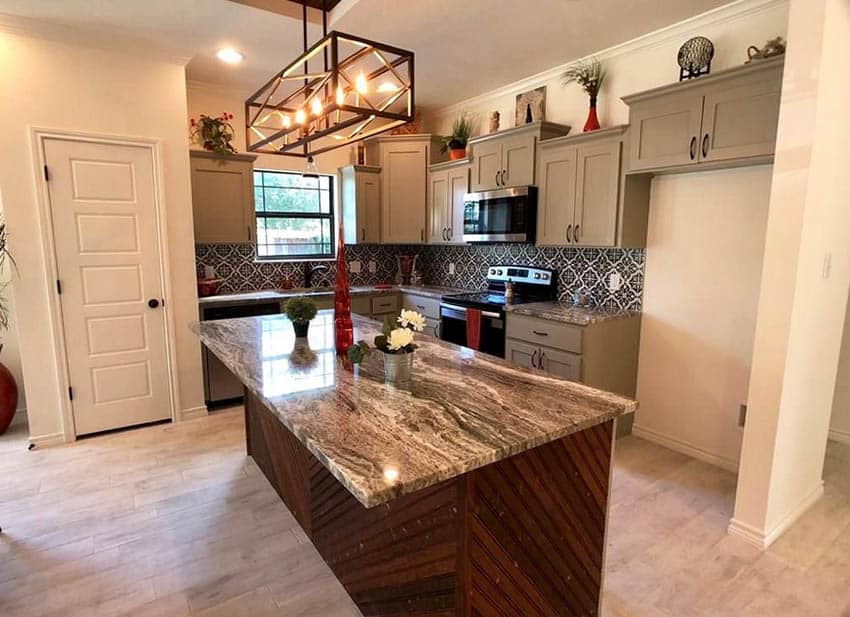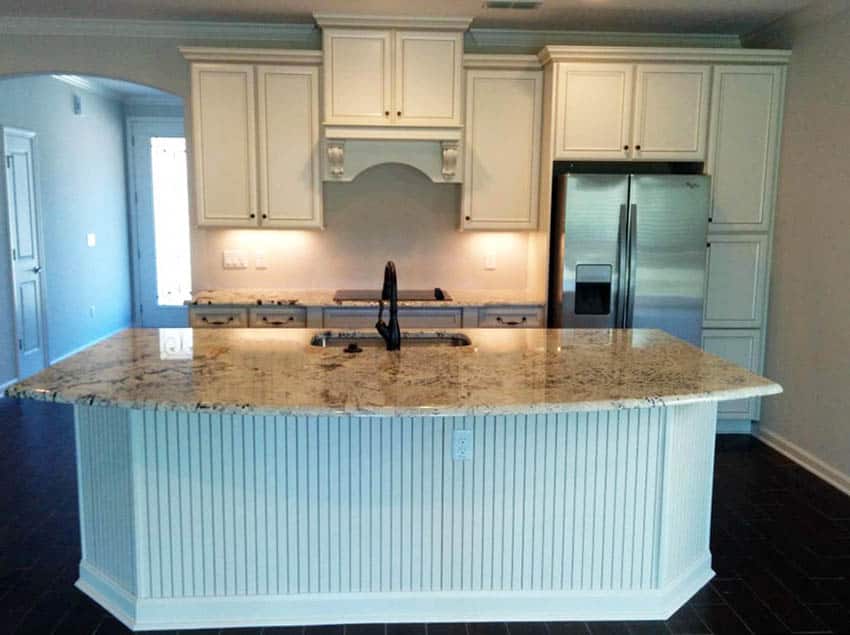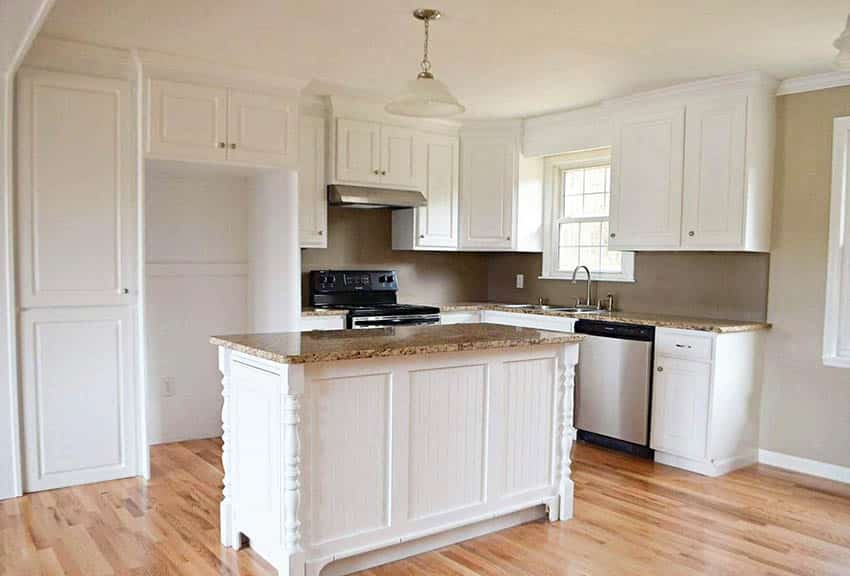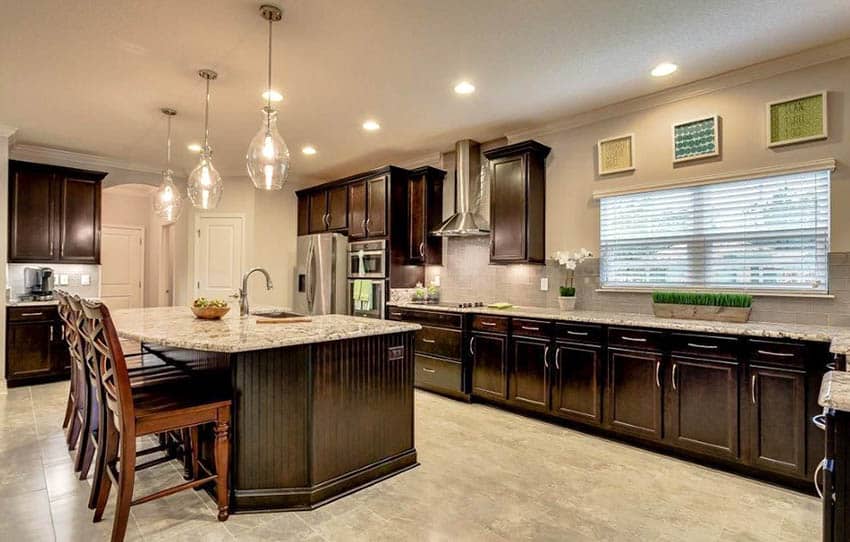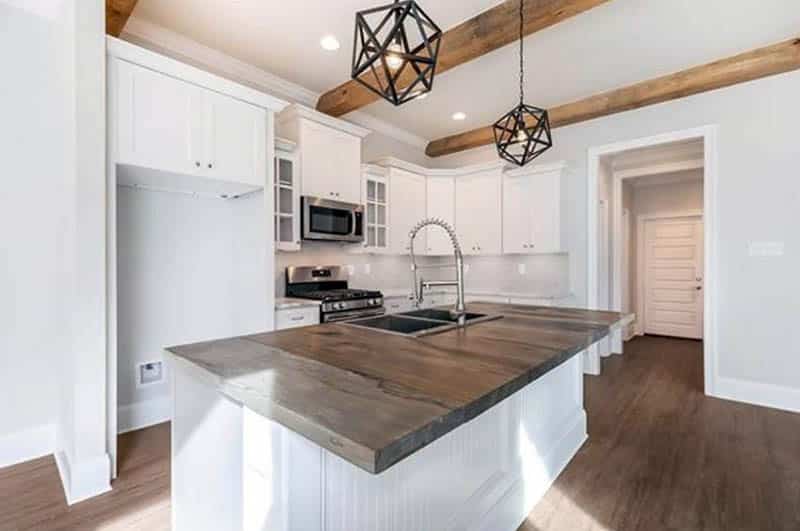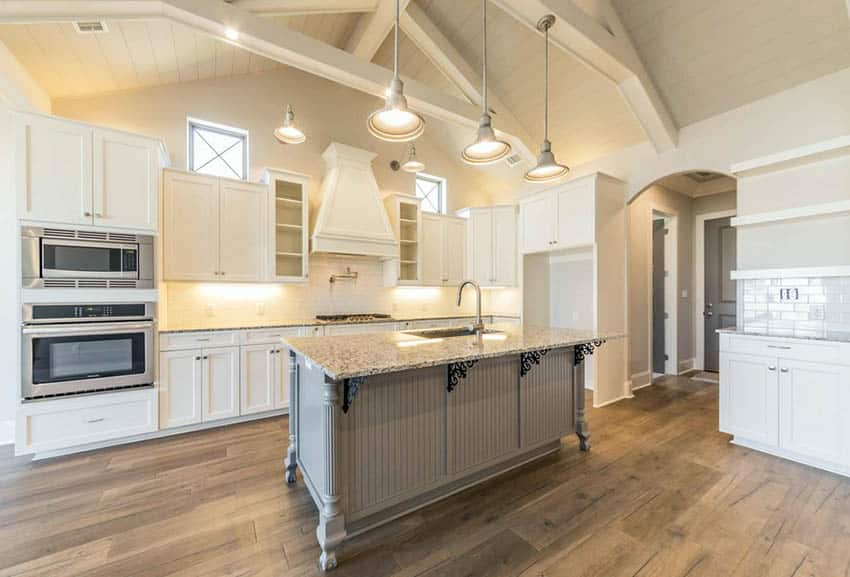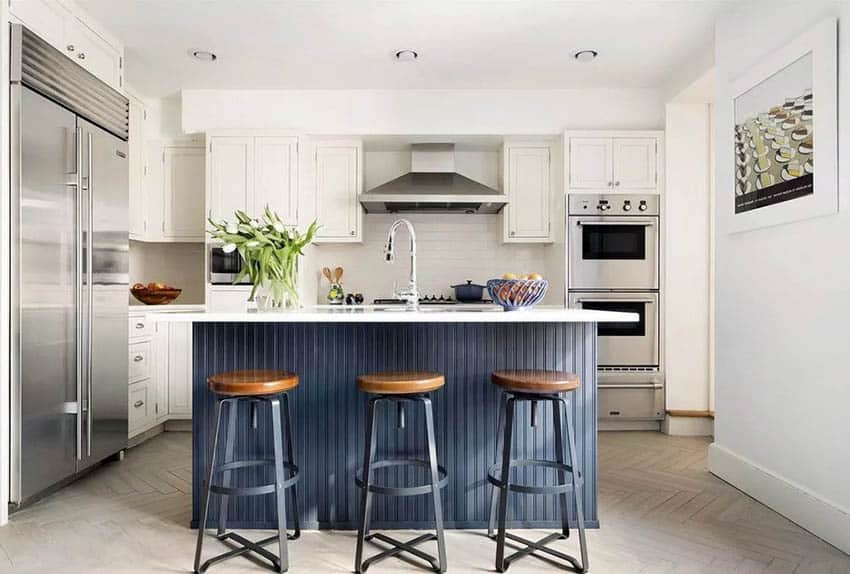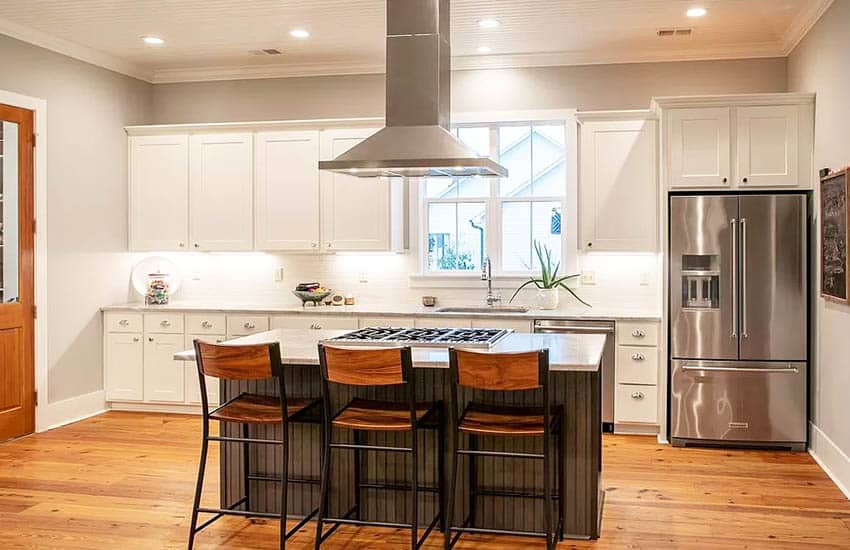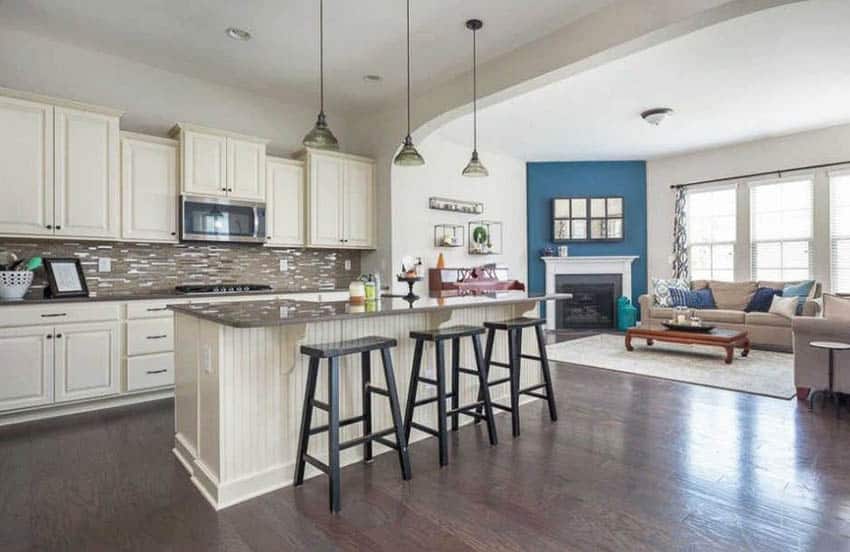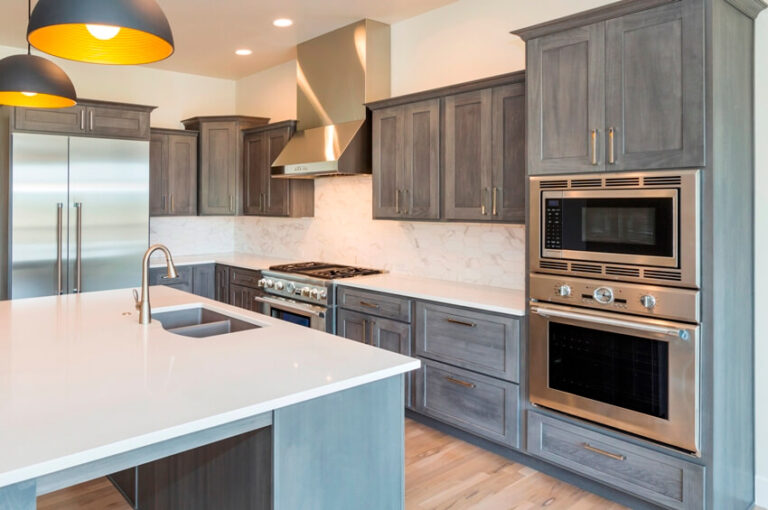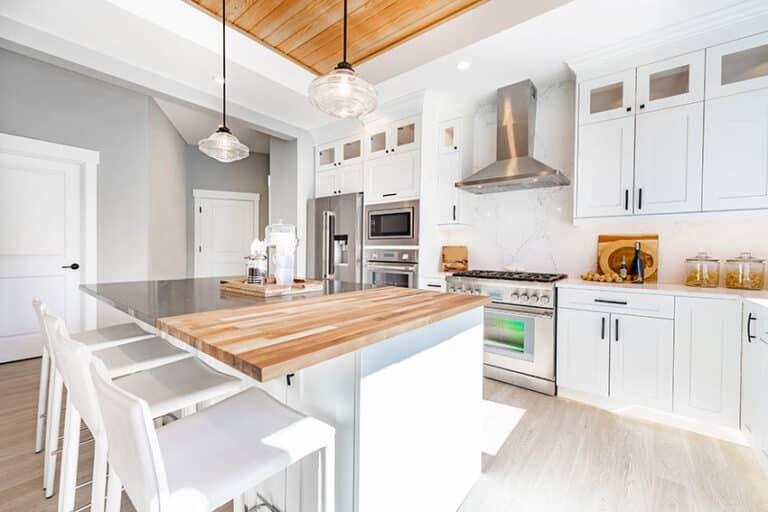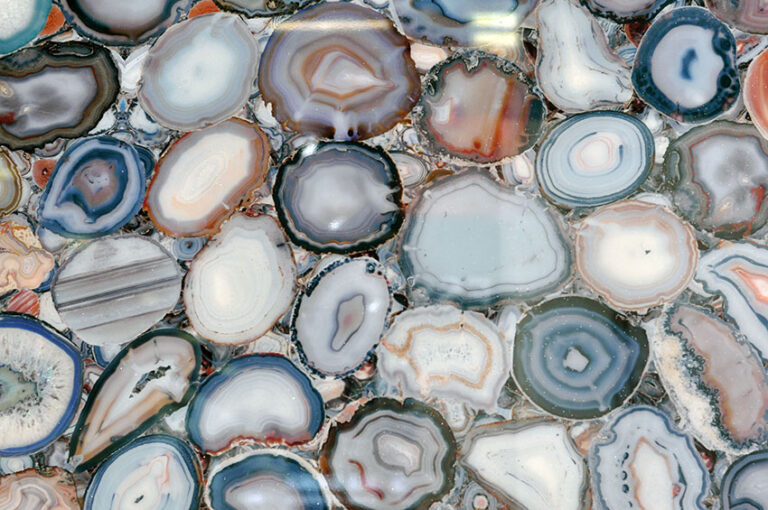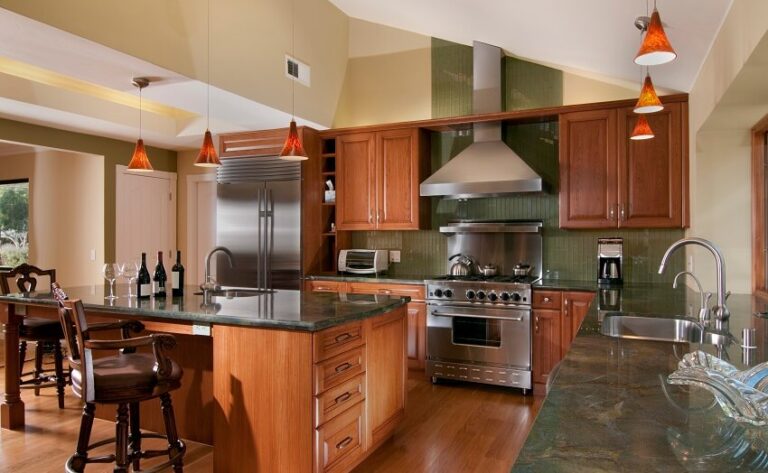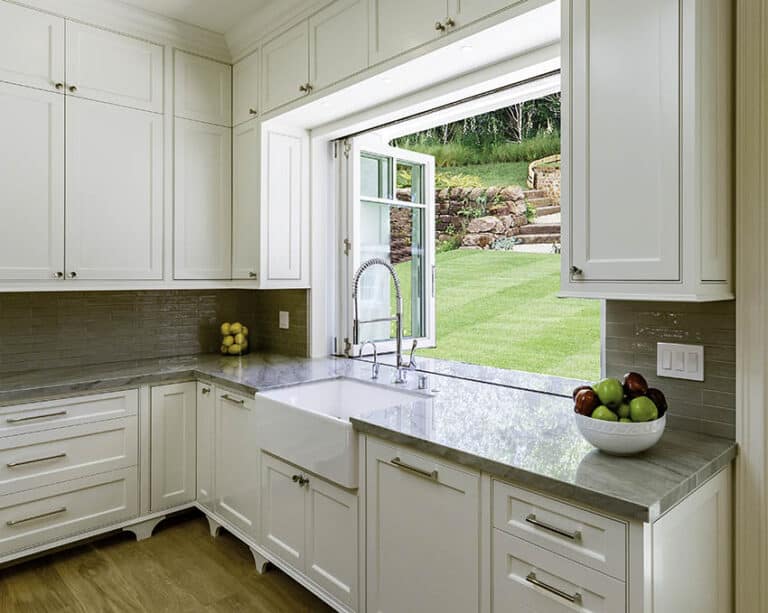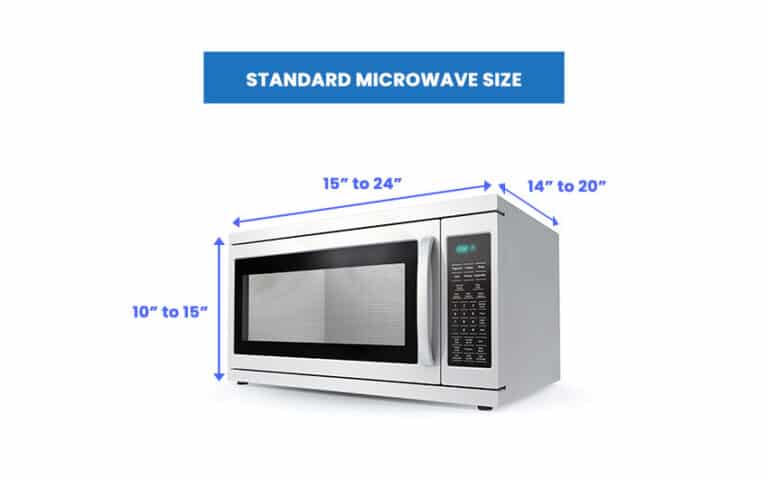Beadboard Kitchen Island (Design Ideas)
Beadboards are common in country homes and have long been a favorite nostalgic detail of such design styles. In contemporary kitchens, beadboards are often applied to cabinets, backsplashes, and walls to give their kitchen that classic, rustic or country-style feel. Another area of application that has been gaining popularity recently is beadboard kitchen island designs.
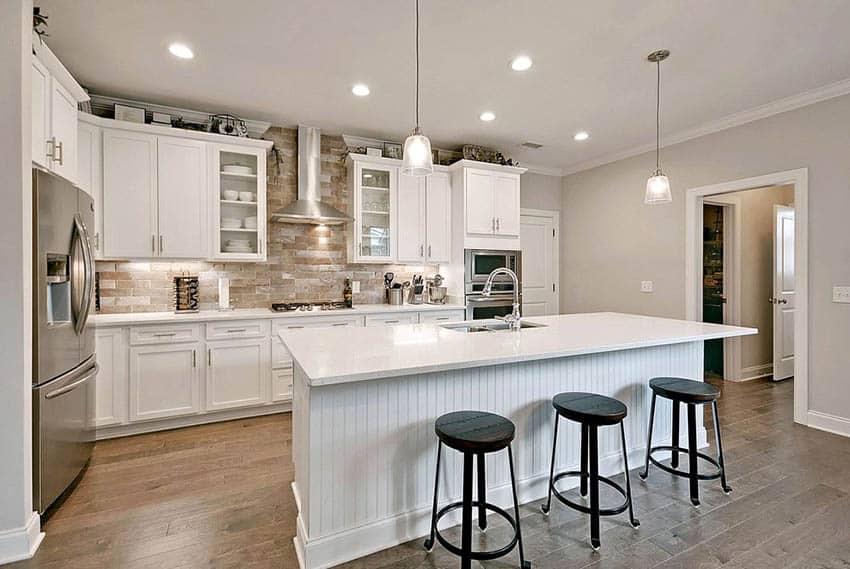
Adding beadboard to kitchen islands is easy and budget-friendly, yet still gives the same subtle country-style feel to your kitchen after installation. The classic paneling style of the panels provides a country-style feel that enhances the design.
Beadboard is a traditional design element that adds character and texture to a kitchen island. Its distinctive vertical lines characterize it and can be used to create a cottage, coastal, or traditional style of design.
Beadboards are usually constructed by attaching MDF (medium-density fiberboard) wood or PVC panels. Wood is useful for applications that will be painted or stained, while MDF is affordable and easy to paint. PVC is a moisture-resistant material that is advisable for use in wet environments.
Pictures of Beadboard Kitchen Islands
Below are some kitchen islands with grooved board panels installed for your inspiration:
The narrow grooved board panels used in this l-shaped country kitchen design with an island give a subtle texture to the surface, helping complete this simple and soft-looking rustic-style kitchen.
The vertical beaded paneling used on this large kitchen island adds a textural variety to the space. The vertical pattern is a nice contrast to the faux brick backsplash tiles.
This kitchen with white cabinets and an island is clad in wooden panels, giving it a texture that stands out amidst the smooth surface of the counter cabinets. The paneled boards, along with other small details in the kitchen, such as pulls, furniture selection, and accessories, definitely complete the country-style appeal of the space.
White is the most popular color used for beadboards, but they also come in a variety of colors and finishes. This example shows a solid mahogany paneling underneath a solid mahogany island. The natural mahogany finish of the islands makes it stand out against the all-white cabinets.
Light sage green on the island’s body gives it a fresh and unique feel, making it a subtle stand-out in the design. It’s a nice, refreshing take on a classic look!
A unique application, this example, is using natural oak panel boards on its island. Still, instead of the common vertical or horizontal application, it creates a chevron pattern, giving it a more contemporary feel, and fits right into the eclectic look of the space.
Paneled islands also complement French-style cabinets well. The narrow boards used in this example help add a visual height to the space and also add more texture and pattern.
This small farmhouse kitchen design has an island with turned column details, and wood panels make a great centerpiece in this small culinary space.
Dark oak panels blend seamlessly well with the rest of the dark oak cabinets of this culinary area. Light gray flooring, countertops, and walls help tone down the dark tone of the wood and create a balanced look.
Beadboards can also be a nice rustic accent detail in contemporary-style kitchens. The white panels applied to the island in this example help complete that subtle rustic vibe this culinary space design is trying to achieve.
This gorgeous classic style culinary space definitely looks good on its own, but with the addition of the freestanding island, a focal point is added to the space. The white kitchen cabinets with granite countertops contrast well with the gray island.
This center island has panel detail, intricate iron brackets, and colonettes that all complement the overall style and theme of the culinary space, but also has more texture that sets it apart, making it a really good accent piece.
What is Beadboard Made Out Of?
When you go to a builder’s store, you might be surprised by the variety of materials used in beadboard panels. Traditionally, beadboard kitchen cabinets are made from solid wood, but there are currently many wood alternatives you can choose from.
For kitchen islands, beadboard panels that can be nailed to the structure as a DIY project can be purchased. The best material for adding beadboard to a kitchen’s island depends on your budget, finish preference, and area of application.
How Much Does Beadboard Cost?
Solid wood beadboards can cost anywhere from $1 per square foot upwards, depending on the wood species and finishing. Solid wood beadboard panels can be bought unfinished, pre-treated (for termites and moisture resistance), ready-to-paint, pre-painted, or pre-finished.
Depending on your specifications, the cost per square foot can go up. This is the material of choice if you want natural wood colors and a high-end look. Natural wood also tends to give more texture and a warmer feel to spaces.
If you feel that solid wood is too expensive and labor-intensive, a popular alternative is MDF beadboards. They usually only cost between $0.50 to $0.75 per square foot and come ready-to-paint or pre-painted. This material is best for newbie DIY-ers and for painted beadboard looks.
If you’re not painting your beadboard and would like a more wood-like alternative, consider using ply-bead panels, which are basically plywood beadboard panels. It offers wood-like textures at a lower cost, starting at $0.50 per square foot or $16 per 4′ x 8′ panels.
For areas with moisture or high humidity, vinyl or PVC beadboards are usually used. They are lightweight and easy to clean and maintain; however, it is also good to consider that they are prone to impact damage and warping. Interlocking PVC beadboard panels usually cost around $0.75 to $2 per square foot.
Another material suitable for moist areas and outdoor applications is fiber cement beadboards. This material has better durability & weather resistance than vinyl/PVC and is a more eco-friendly alternative to PVC. Fiber cement beaded boards from known brands can cost $7.45 to $12.35 per square foot.
How to Install Beadboard
Steps and methods in installing beadboard to kitchen islands would vary depending on the surface of the application – is it an existing island? Is there paneling or molding? But for DIY newbies, here’s a basic outline of steps in installing beadboards:
- Measure the area of application for your kitchen island
- Purchase your beadboard from your local builder store – If there’s relatively low humidity in your area and you don’t expect the surface to get too wet, we recommend using MDF beadboard panels. MDF beadboards usually come pre-painted, so it will save you time from sanding and doing a base coat. They’re also easy to cut and have smoother edges, so it’s an easy material for beginners.
- Purchase adhesives and finishing materials – liquid nails, finishing nails, sandpaper, caulk, moldings (baseboards, corner strips, etc, if needed), paint
- Cut your boards to size. Note that 1-1/2 wide panels are usually easier to miter around the corner and are usually proportional to existing moldings and frames.
- Make sure the application surface is clean – sand surface as needed, especially if it has existing glossy paint.
- Add a generous amount of liquid nails on the back of your cut MDF beadboards and apply to the surface of the kitchen’s island.
- Use finishing nails to secure them in place. Make sure the nail heads are embedded into the MDF panels properly.
- Caulk the exposed edges/corners and the finishing nail holes.
- Sand and paint to finish.
How Do You Paint Beadboard?
Appropriate paint is determined by the type of beadboard material you are using. Pre-primed MDF and Fiber Cement boards are usually the easiest to paint/work with. For other materials, they are also available pre-finished/painted. But if you want to paint them on your own, consult the material specialist for the best paint recommendation for your specific material.
If you have existing cabinetry in your kitchen, you can just add the beadboard panels on the front side of the kitchen island, like in this example above. For best results, make sure the paint job blends in well with the existing cabinets.
Other factors to consider:
Aside from the material cost, another factor you need to consider would be installation cost. Depending on your material, the installation cost will vary. If you need to finish or paint your beadboards, that is also another labor cost to factor in, so keep that in mind when selecting your material – a pre-finished board might cost more per square foot but might save you time and money if you factor in finishing costs. Installation of beadboards usually costs $4-$6 per square foot.


